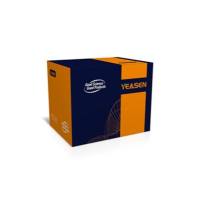Reporter genes can be used to advantage in a variety of different kinds of gene transfer experiments. One of the most common applications is the optimization of transfection methods. Owing to the large number of variables that influence the uptake and expression of exogenously introduced genes, it is extremely helpful to have available rapid, sensitive methods for determining transfection efficiency. A second frequent application of reporter genes is to study promoters and transcriptional enhancers. To rigorously map functional domains in transcriptional control elements it is often necessary to generate large numbers of deletions, insertions, and point mutations, and then carry out functional assays on each construct. As in optimization studies, an appropriate reporter gene can greatly facilitate the rate with which information is accumulated. Another gene regulation application involves measuring activity of transacting transcriptional regulatory proteins. In such experiments, one plasmid codes for the transacting factor, while the second cotransfected plasmid carries a target cis -acting element coupled to a reporter gene. Examples of more novel reporter gene uses include introducing translational stop codons into a reporter coding sequence to measure suppressor function in mammalian cells (1 ,2 ), and measuring transcriptional competence of UV-irradiated reporter plasmid DNA (3 ).






